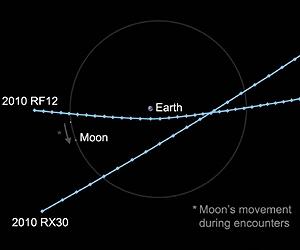Slooh's broadcast said 2017 AG3 was 'roughly the same size as the asteroid that struck Chelyabinsk, Russia in 2013,' meaning had it hit, the effects would have been similar.
Business Insider: An asteroid just flew by Earth about 50% closer than the moon, and we barely saw it coming
Early Monday morning, while the US East Coast was making coffee, dropping kids off at school, and cursing in traffic, a space rock as big as a 10-story building slipped past Earth.
The asteroid, dubbed 2017 AG13, was discovered only Saturday by the University of Arizona's Catalina Sky Survey, according to an email from Slooh, a company that broadcasts live views of space.
It's between 50 and 111 feet (15 to 34 meters) long, and when it swung by Earth, 2017 AG3 was moving at 9.9 miles per second (16 kilometers per second). The near-Earth object, or NEO, came within about half the distance that the moon is from Earth, according to Slooh.
Read more ....
Update #1: Phew! Giant asteroid passed just 120,000 miles from Earth last night - and was only spotted 24 hours earlier (Daily Mail)
Update #2: Another near miss: Is Earth ready for an incoming asteroid? (Charlie Wood, CSM)
CSN Editor: There has been closer calls.


















